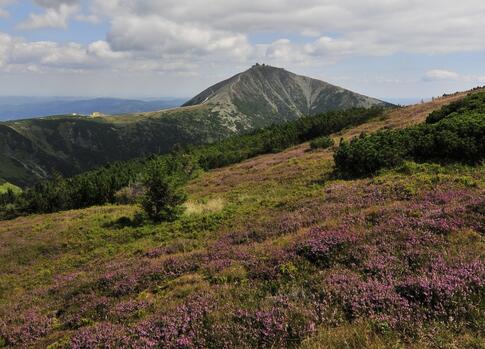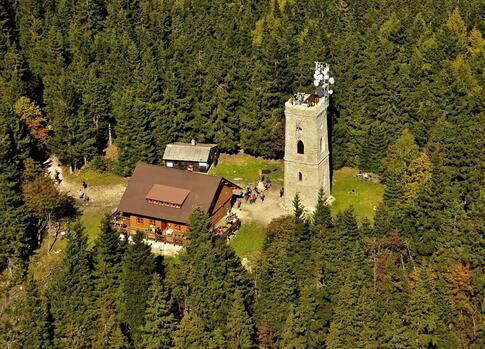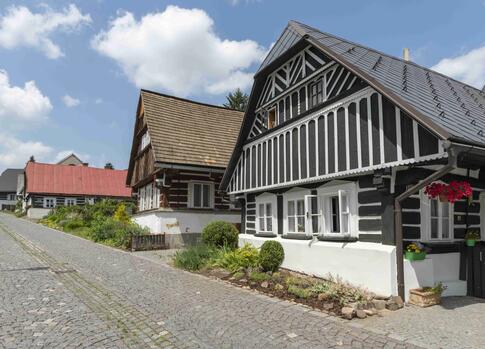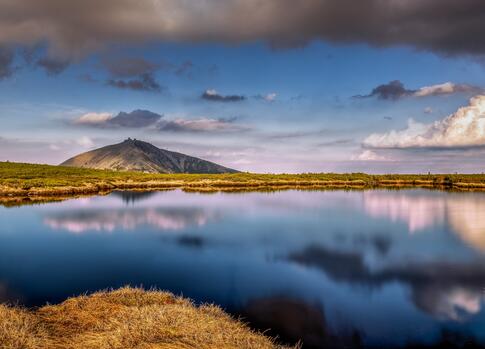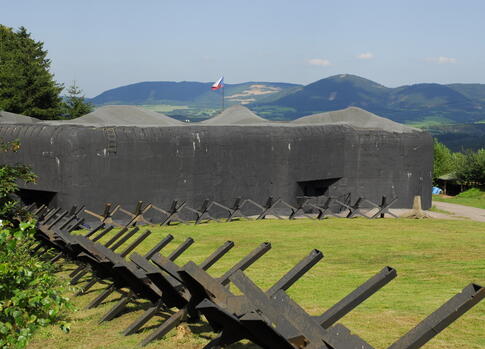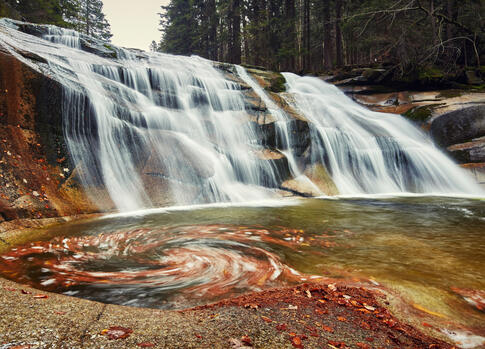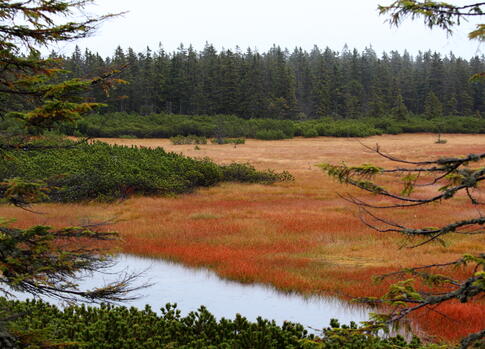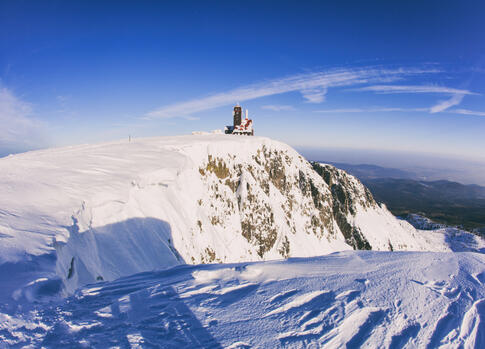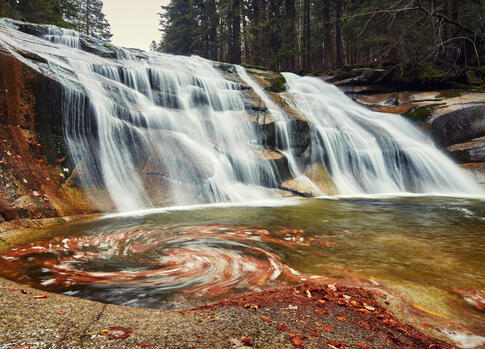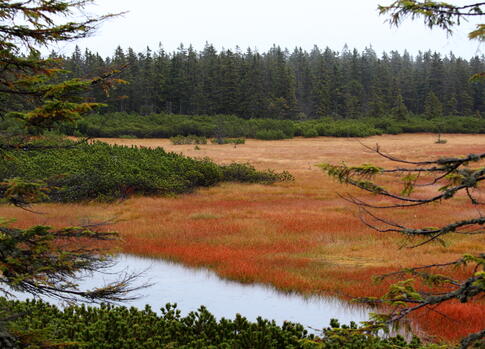Called Snezna (‘Covered in Snow’) before, now Snezka, this is the highest mountain in the Czech Republic and the most popular tourist destination in the eastern part of the Krkonose thanks to its unique views.
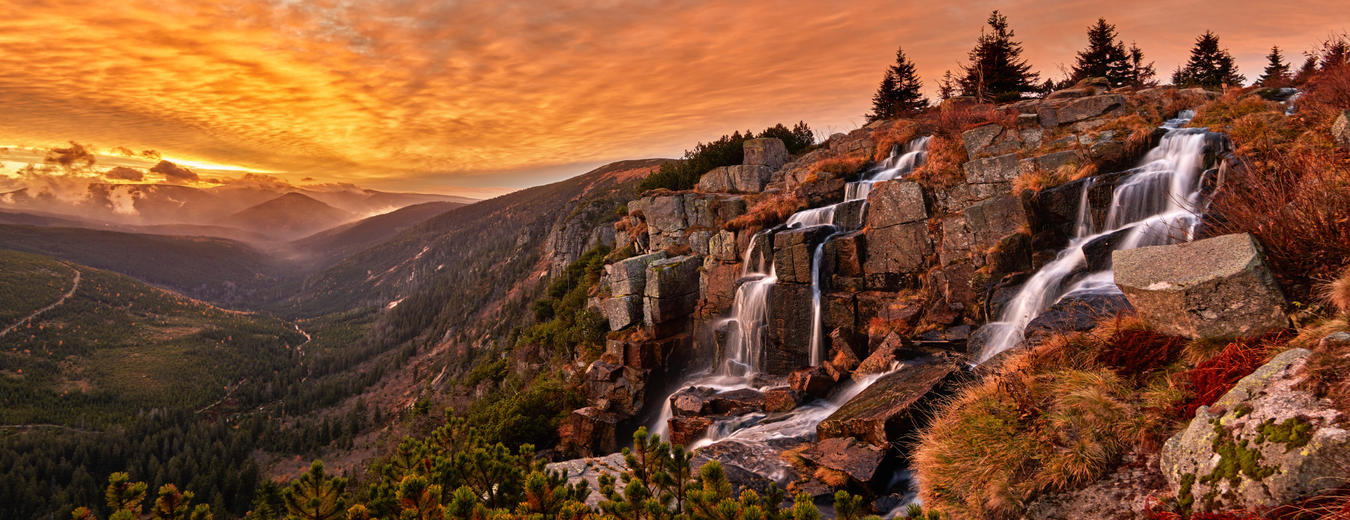
Krkonose records
The Krkonose in numbers
- 1603 m a.s.l. is the height of Snezka, the highest mountain in the Krkonose and the whole Czech Republic.
- 148 m is the height of the Pancavsky waterfall, the highest in Bohemia. It falls down several cascades from the edge of a 250 m high rock
- 1386 m a.s.l. is the altitude of the source of the Labe (Elbe), one of the most important European rivers.
- In the 12th century, the Krkonose was still an uninhabited and wild mountain range. It was one of the last areas in the country to be inhabited.
- Back to 1456 dates the first historical record of an ascent of Snezka, made by an unknown citizen of Venice looking for precious stones.
- 1623 is the date discovered in one of the three gabled houses in the main square in Vrchlabi, which makes them the oldest preserved timbered structures in the Krkonose.
- Over 320 years old is the St Lawrence Chapel built at the top of Snezka.
- In 1913, Czech skiers and friends Bohumil Hanc and Vaclav Vrbata tragically died during a 50 km skiing contest. To commemorate this, a stone monument was built on Zlate navrsi ridge.
- 180 days a year is the average duration of snow cover in the area, usually in a layer of 150–300 cm.
- Only 0.2°C is the average annual temperature at the top of Snezka.
- 1300 flowering plant species, 57 mammal species and 165 bird species can be found in the Krkonose.
- A total of 800 km of summer and winter tourist paths are marked for trips around the Krkonose.
- 32 cable cars and 136 ski lifts are used by visitors to ski resorts in the Krkonose.
- 600 km of groomed cross-country tracks will take you through the mountains, offering long distance views as well as snow-clad valleys.
The most peculiar example of timbered suburban houses is ‘Zvedava ulicka’ Street in Jilemnice. The name (‘Street of Curiosity”) comes from the street layout, where each newly built house was closer to the street than the previous house by one window so that the square could be seen from all houses in the street.


